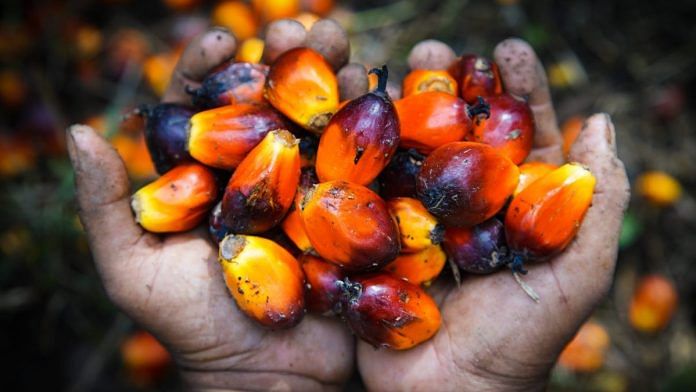However, this increase isn’t unique to palm oil. It reflects a larger shift in dietary habits driven by urbanisation, sedentary lifestyles, and the growing intake of ultra-processed foods (UPFs). According to a 2023 , India’s UPF market surged from $900 million in 2006 to nearly $38 billion in 2019. These foods, rich in refined sugars, sodium, and preservatives, pose far greater health risks than any single cooking medium.
It is true that palm oil contains saturated fats, but not all saturated fats are created equal. When consumed as part of a balanced diet, palm oil is no more harmful than other edible oils. It contains nearly equal proportions of saturated and unsaturated fats and is rich in antioxidants like vitamin E. Its health impact depends more on the quantity and context of consumption than on its mere presence in the kitchen.
However, the conversation must go beyond kitchens and diets. India imports over 15 million tonnes of edible oil annually, including Rs 40,000 crore worth of palm oil, which accounts for about of the total imports. This heavy reliance on imports strains our foreign exchange reserves and exposes us to global price volatility and supply chain disruptions. The National Mission on Edible Oils – Oil Palm (NMEO-OP), backed by Rs 11,040 crore in funding, is a strategic effort to cut edible oils import dependency, boost domestic production, and enhance farmer incomes.
This mission is already bearing fruit. In , farmers have seen up to a 50 per cent rise in prices, earning Rs 21,000 for a tonne of Fresh Fruit Bunch (FFB) produce. States like Karnataka, Mizoram, and Arunachal Pradesh have also embraced oil palm cultivation. Importantly, in India, forest lands are not being recommended and used for oil palm cultivation, contrary to common misconceptions. Only the cultivable land of the individual farmer is under oil palm cultivation mainly as replacement of rice cultivation and that too in agro-ecologically suitable regions only. Oil palm is a rapidly expanding profitable crop in northeastern states under NMEO-OP, contrary to common misconceptions.
From an environmental standpoint, palm oil is the world’s most land-efficient oil crop, yielding 4-5 tonnes of oil per hectare compared to just 0.4-0.5 tonnes for soybean. According to Our World in Data, palm oil makes up 36 per cent of the production using only 9 per cent of the land devoted to oil crops. Replacing it with alternatives like soybean, rapeseed, or sunflower would demand significantly more land, potentially exacerbating deforestation. Oil palm also requires less water than resource-intensive crops like sugarcane or rice, a critical factor for water-stressed regions.
NMEO-OP also incorporates sustainability safeguards. Special provision for intercropping of annual crops in oil palm plantation has been made for the initial four years of non-bearing period of oil palm. Such agri-horticultural systems conserve land resources and are better adapted to climate change. Palm plantation provides farmer buy-back guarantees, and offers viability gap funding to protect growers from price fluctuations. The mission further encourages bilateral cooperation with countries like Malaysia in the field of palm oil, especially in research and development, seed supply, and partnership management.
Atmanirbhar Bharat is more than just a slogan; it is a strategic push for independence in critical sectors, including food and edible oils. Palm oil isn’t just another cooking medium; it’s a vital component of India’s pursuit of edible oil security. Public health must be addressed through stronger food literacy, better regulation of UPFs, and promotion of balanced diets, not by demonising a crop that sustains thousands of farmers and reduces our import bill by billions.
Blaming palm oil unfairly may make for a dramatic headline, but India’s food strategy must rise above fear-driven narratives. What the country needs is not a retreat from palm oil, but a smart, sustainable, and informed embrace of it.
(Edited by Aamaan Alam Khan)








